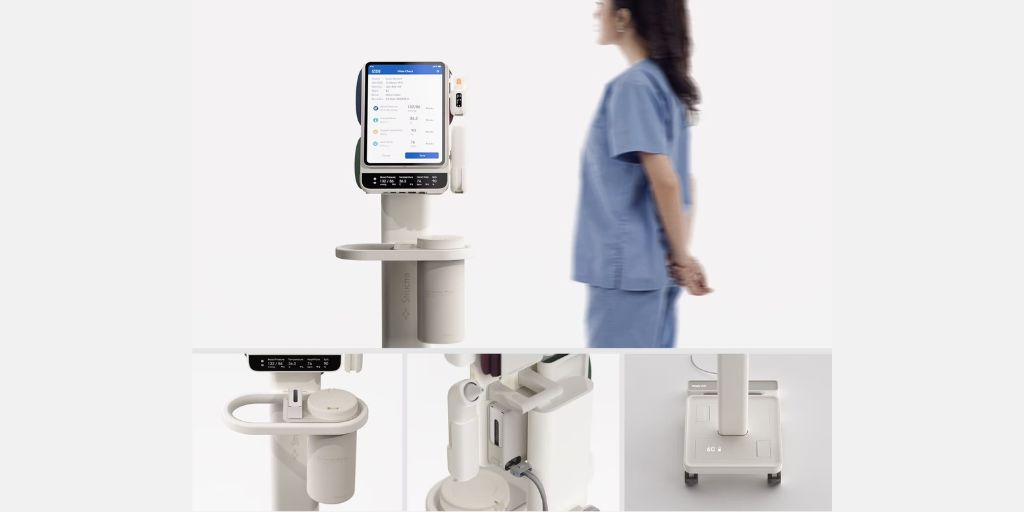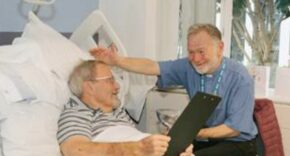
Nurses could each be saved up to 11 hours of ‘pointless’ work per month – the equivalent of almost £1billion per year across the National Health Service (NHS) England – if basic monitoring equipment was made more efficient.
That’s the claim of a Nottingham Trent University (NTU) student who has created a new system to read patient vital signs, including a single trolley to replace the standard two that are used in hospitals across the country.
The idea came to Zaki Razak, 23, after he was admitted to hospital for suffering a severe allergic reaction. It led to him witnessing how nurses were working with outdated systems to record a patient’s heart rate, blood pressure, oxygen levels and temperature.
So the product design undergraduate created a single solution which allows nurses more time to treat their patients rather than working with old fashioned systems that need updating.
“I had a pretty scary allergic reaction to what I think was pineapple last summer and it left me with severe blisters and inflammation on my hands and feet,” said Zaki, from Johor Bahru in Malaysia, who is studying BA Product Design in NTU’s School of Architecture, Design and the Built Environment.
“The blisters were painful and had to be popped and treated with a special wax to calm the skin down. I still have scars on my hands to remind me of the experience.
“But while I was being treated at hospital I noticed how the nurse’s time was being wasted by working with outdated equipment, and she was clearly frustrated.
“For something as routine as taking a patient’s vital signs, a lot of time was lost to digging through a basket to find the right equipment, while some of the leads were too short to reach the other side of the patient, meaning the trolley had to be repeatedly moved.
“A lot of work was done transferring badly written notes onto a computer, with repeated trips back to the ward office to get the right information.
“So I wanted to design a complete solution which does away with all the inefficiencies and makes taking and recording vital signs an easier thing to do, as so much time was being pointlessly wasted.”
Zaki’s design combines the vital sign monitor (VSM) trolley with the point of care testing (POCT) trolley, and does away with the need for a cumbersome laptop and personal smartphone.
Instead a tablet computer is utilised as the single point of recording all data and make everything more portable.
The tablet is magnetised to a docking station and connected wirelessly to all the devices via Bluetooth, so taking readings is more efficient without the need to move the trolley repeatedly.
Written notes can be photographed and viewed on the tablet when necessary to reduce the need for pieces of paper. This would also help keep everything digital to save time walking to the office while also reducing errors caused by bad handwriting and making notes easily accessible.
The trolley is made from moulded Acrylonitrile Butadiene Styrene (ABS) plastic and has compartments for each device. The design is compact and adjustable for people of different heights and the top surface can be turned into a tray and be rotated. The modular design also allows for ease of cleaning, customisability, and maintenance.
The bottom of the trolley has a power bank which is recharged wirelessly when parked in its charging dock while out of use. The charging dock allows for easy charging and encourages the discipline of returning the trolley back to its designated spot.
Zaki’s research, which is based on interviews with half a dozen nurses, shows that the estimated amount of time saved per nurse is 11 hours per month.
This is based on the efficiency savings of 10 minutes when taking and recording all vital signs per ward (with up to 30 patients on each ward) and these recordings being taken three times a day.
The efficiency saving is equivalent to a cash saving of around £982 million a year for the NHS in England, based on the average salaries of the nurses being paid £20 per hour.
Zaki’s design is on public display until 12 June for the 2025 NTU Student Showcase, which one of the largest exhibitions of graduating art and design talent in the UK.
James Dale, Head of Product Design at NTU, said: “This is a great example of how something as simple as a well-designed hospital trolley and updated equipment can make a major difference to thousands of NHS staff.
“Zaki has proven how smart design and ergonomics could improve the efficiency of the NHS, leading to cost-savings and improvements to the working conditions of everyday frontline nurses.”











